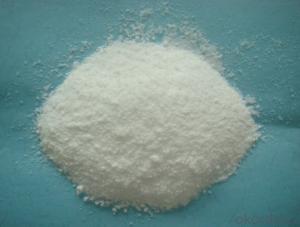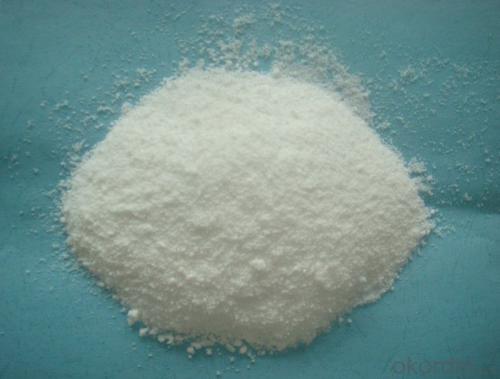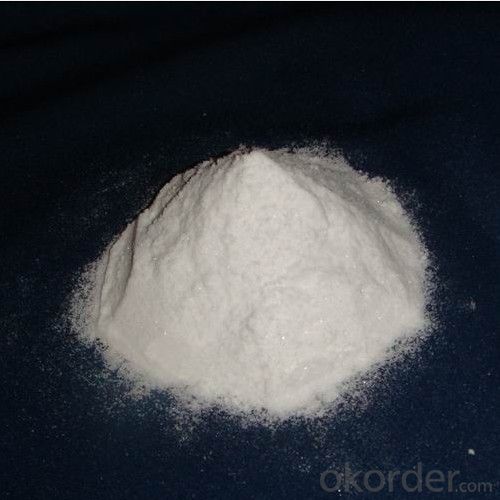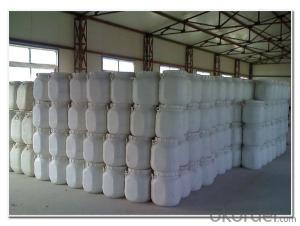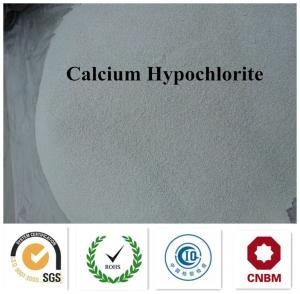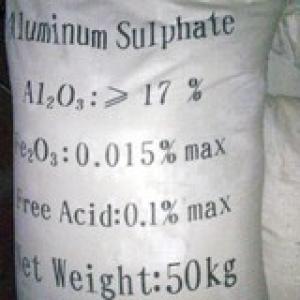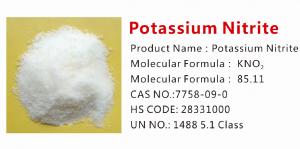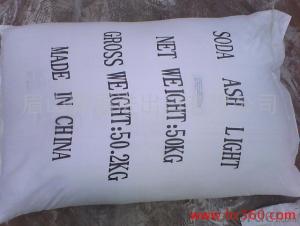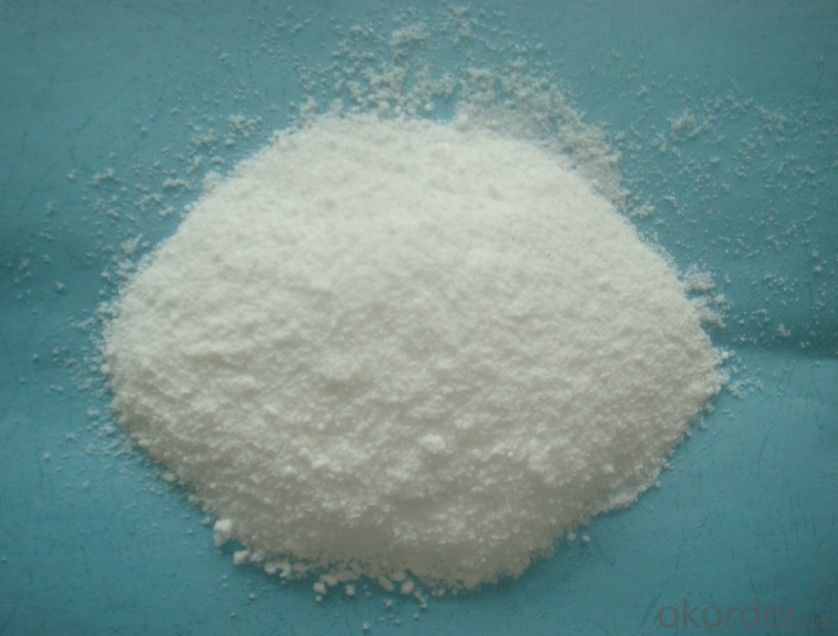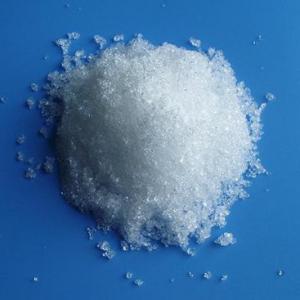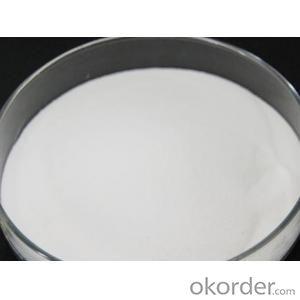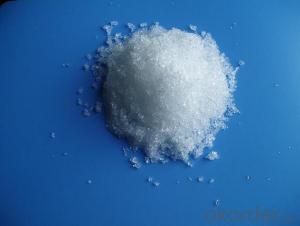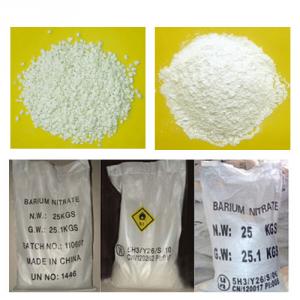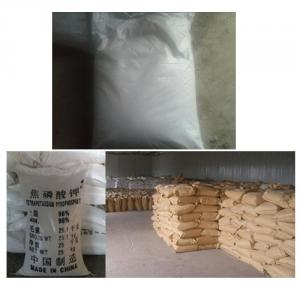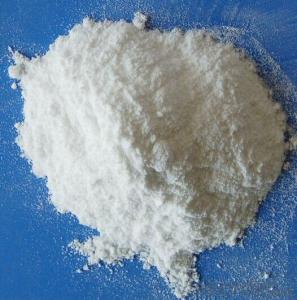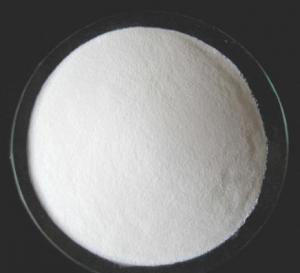Calcium Nitrate Anhydrous Calcium Nitrate
- Loading Port:
- China main port
- Payment Terms:
- TT OR LC
- Min Order Qty:
- 1000 kg
- Supply Capability:
- 500000 kg/month
OKorder Service Pledge
OKorder Financial Service
You Might Also Like
| Calcium Nitrate Anhydrous Calcium Nitrate |
Technical standard : Q/140706CSC002-2005 Molecular Formula:Ca(NO3)2.4H2O Ca(NO3)2 Molecular Weight:236.15 164
Property: Colorless transparent crystal.Soluble in water, methanol, ethanol, easily deliquescence in the air. Calcium nitrate, or oxidants, the case of organic compounds, sulfur combustion and explosion that occurred, and red flames. Use: Liquid milk is mainly used for rubber, flocculant, oil wells, sewage treatment and so on. No land used for agricultural cultivation, acid soil available fertilizer. for the manufacture of fireworks and incandescent light cover. the defense industry for the manufacture of explosives. Electronics and Instruments Industry Used for coating the cathode. is to create the raw materials of other nitrates. Package: 25/50KG woven bags or pack according to the requirements of customers. Quality Standard: |
Item | Index | |
Industrial Grade | Agricultural Grade | |
content | ≥99.0% | ≥99.0% |
PH value | 5.0-7.0 | 5.0-7.0 |
Heavy metal | ≤0.0005% | ≤0.001% |
Water insoluble | ≤0.01% | ≤0.02% |
Sulphate | ≤0.02% | ≤0.02% |
Iron | ≤0.002% | ≤0.01% |
Chlorites | ≤0.005% | ≤0.005% |
Calcium oxides content(CaO) | --- | ≥23.0% |
content(N) | --- | ≥11.7% |
FAQ
1.Q: What is MOQ?
A: Our MOQ is 1 TON.
2.Q: Could you offer free sample?
A: We can provide free samples to you for quality testing.
3.Q: What about your packing?
A: For liquid: Flexitank, or IBC tank 1000L
For powder:Woven fabric bag with plastic film liner( 25kg or 1000kg)
Clients’ packing is workable.
4.Q: How about your productive capacity?
A: 150000 tons/Year.
5.Q: What is your delivery time?
A: Within 7 days after received deposit or L/C at sight.
- Q: The stronger the transpiration is, the faster the absorption rate of inorganic salts and water is
- wrong. Can only promote the transport up! Can not promote absorption.
- Q: What are the important physiological effects of inorganic salts in cells
- Composition of cells in some important compounds,
- Q: Cells in the water, inorganic salts, protein, lipid, carbohydrate and nucleic acid six words how wrong this sentence
- Plus a "so" on the right, because there are many other compounds in the cell
- Q: How can experiments prove that there are inorganic salts in the leaves of plants
- The experimental leaves used to dry, crushed into powder or sintered ash, and then the analysis of mineral elements, we can learn.
- Q: how come a penny can hold more drops of the salt water solution than just plain tap water from your faucet?
- Surface film tension is the property of a liquid by which it acts as if its surface is a stretched elastic membrane. This tension allows insects to stand on the water’s surface. Surface film tension is caused by the attraction of water molecules to each other; in addition, the surface molecules are attracted to the underlying molecules. The amount of surface film tension is affected by both temperature and dissolved substances. An increase in temperature lowers the net force of attraction among molecules and so decreases the surface tension. An increase in dissolved organic substances also lowers the surface tension However, an increase in dissolved inorganic salts causes a rise in surface tension - increases the attraction of the surface molecules for the underlying molecules.
- Q: Cells are composed of water and inorganic salts or by organic matter and none
- Cells are composed of water and inorganic salts or b
- Q: Is all the inorganic salts in the body related to life activities?
- Sugar is the most important material for the human body, all the activities of the human body, including learning, walking, digestion and breathing, etc., which are the most important substances in the human body. Consumption of energy (about 70%) mainly from the carbohydrates, fat is the body of the energy material, the protein is the basic material of human cells, but also to provide energy, vitamins are neither the main raw material of the organization, nor the supply of energy Material, but it has an important role in the life activities of the human body; inorganic salts constitute an important raw material of human tissue, water is the main component of cells. Which protein, sugar, fat, vitamins can burn for organic matter, and water, inorganic salts can not burn as inorganic.
- Q: Does the plant roots absorb inorganic salt ions must be active
- Plants absorb inorganic salts and do not necessarily absorb water. Plants absorb moisture and absorb inorganic salts are two relatively independent processes. Plants absorb moisture through the infiltration of root cells to absorb water, the process is essentially free of water diffusion process, neither the carrier nor the need for energy; and plant absorption of inorganic salts is carried out by means of active transport, This process requires the carrier and consumes the energy generated by cell metabolism. Of course, plant water absorption and absorption of inorganic salts are a certain association, inorganic salts to be dissolved in water to be absorbed, and inorganic salt ions in the transport of plants can not be separated from water.
- Q: Inorganic salts are not nutritious
- Nutritional substances are sugar protein fat three nutrients
- Q: as a example potesium,sodium,magnees,calcium
- The sodium-potassium pump is most important in controlling the working of neurotransmitters. Calcium ion is also generated in voltage gated Ca++ channel, and Magnesium is necessary for metabolic functions. But Sodium is one of the most important inorganic component in our body. Of course Potassium is also as important. But, if you have ever seen the back of all food products there is a special part showing amount of Sodium in it...even Snacks.. :)
Send your message to us
Calcium Nitrate Anhydrous Calcium Nitrate
- Loading Port:
- China main port
- Payment Terms:
- TT OR LC
- Min Order Qty:
- 1000 kg
- Supply Capability:
- 500000 kg/month
OKorder Service Pledge
OKorder Financial Service
Similar products
Hot products
Hot Searches
Related keywords
